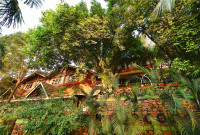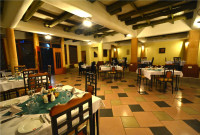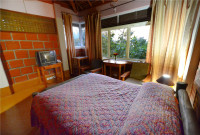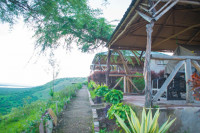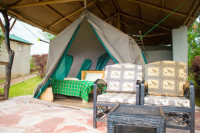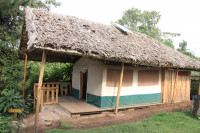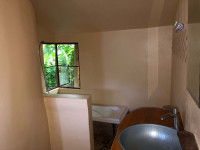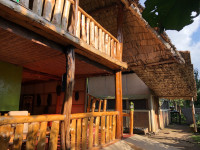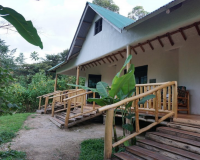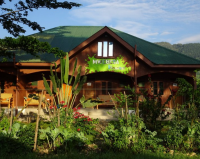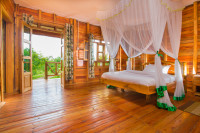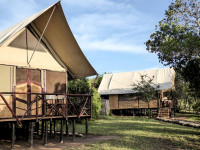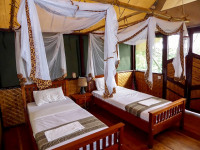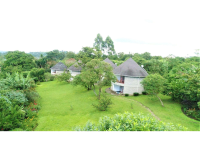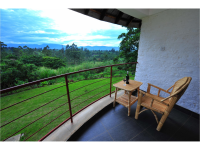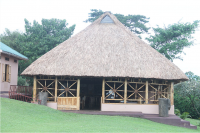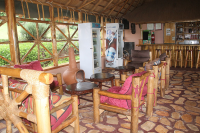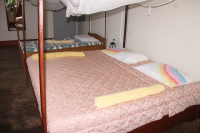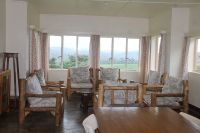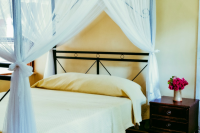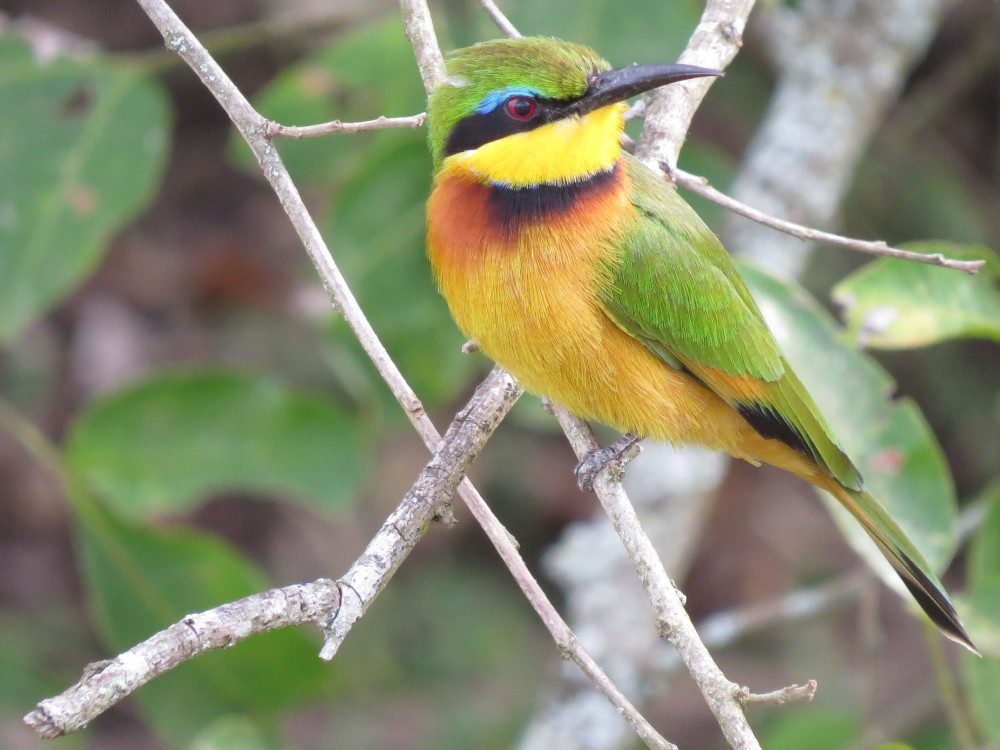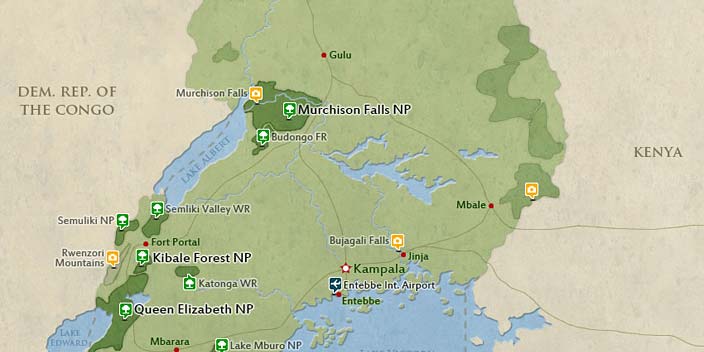
$4,062 pp (USD)
2 travelers on Start dateArrival
Arrival

Day 1
Arrivals at the Airport
Arrivals at the Airport
Early Arrivals will give a chance to bird in Entebbe Botanical Gardens (EBG)
Situated on the northern shores of Lake Victoria, EBG is a beautiful place with colourful butterflies, birds and primates in an area of 40.7ha. The habitat has attracted a diverse array of birds – 206 species (both forest and shorebirds) and monkeys; Black and White Colobus and Vervet Monkeys.
Here, the birding walk is more relaxed. Some of the species we are likely to see here include harrier hawk, lizard buzzard, northern brown-throated wattle-eye, willow warbler, olivaceous warbler, African thrush, yellow-throated leaflove, African Grey Parrot, golden-backed, yellow-backed and orange weavers, white-spotted flufftail, ross’s Turaco, crowned, African pied and black-and-white-casqued Hornbills, Superb, olive-bellied, collared and Marica Sunbirds, ruff, green crombec, Blue-cheeked bee-eater, heuglin’s and snowy-headed robinchat, red-cheeked cordon-blue, grey-headed negro-finch, etc.
- Main Destination:
- Entebbe (City)
- Accommodation:
- Forest Cottages
- Meals & Drinks:

Day 2
Mabamba Swamp and Lake Mburo National Park
Mabamba Swamp and Lake Mburo National Park
We bird to Mabamba wetland in the morning and continue to Lake Mburo in the afternoon.
Start very early at 6:00 and carry packed lunch and drive to Mabamba Wetland.
Mabamba is about 50km west of Entebbe area on the shores of Lake Victoria. The bay comprises of an extensive marsh with a labyrinth of channels and lagoons, classified as an IBA (Important Bird Area) and home to several pairs of Shoebills, Uganda's most famous avian resident. Other interesting species include Lesser Jacana, Carruther's Cisticola, Winding Cisticola, Malachite Kingfisher, Blue-breasted Bee-eater, Blue-headed Coucal, Weyns's Weaver, Papyrus Gonolek, etc.
We shall be here till late this morning and later continue birding on the way to L. Mburo National Park stopping over at the equator for Lunch.
- Main Destination:
- Lake Mburo National Park
- Accommodation:
- Eagle's Nest Camp
- Meals & Drinks:

Day 3
Whole day birding in Lake Mburo National Park
Whole day birding in Lake Mburo National Park
Morning bird walk in the woods, mid-day boat ride and afternoon birding in the wooded Savannah for the rest of the day
We shall start early; have our breakfast and thereafter we go do an early morning bird walk in the woods. The boat ride along the shores of the lake will be looking for specials like the white-backed and black-crowned night herons, rufous-bellied heron, African Finfoot, African darter, water thicknee etc. The papyrus swamp along the shores of the lake holds the papyrus yellow warbler and papyrus gonolek. You will also encounter pools of hippos, crocodiles, and buffalos. We spend the rest of the day on a game drive in the wooded savannah. Most sought-after species here include tabora cisticola, red-faced barbet, brown-chested lapwing etc.
Birding here is a delightful experience, with beautiful scenery and a markedly different fauna from other reserves. This is the best place in the country to see antelopes such as Eland, Zebra, Topi, and Impala.
- Main Destination:
- Lake Mburo National Park
- Accommodation:
- Eagle's Nest Camp
- Meals & Drinks:

Day 4
Travel to Ruhiija sector of the Bwindi Impenetrable Forest National Park
Travel to Ruhiija sector of the Bwindi Impenetrable Forest National Park
Today, we shall check out the Camp, have an early morning breakfast and further southwest to Bwindi area. We have chances of birding on the way at a few spots. We may have lunch in Ntungamo or Kabale depending on our pace and later continue to Ruhiija. Early arrivals at Ruhiija will give a chance to bird along the main road. Our first encounter with the Albertine Rift Endemics begins here. We shall have dinner at the Camp
Bwindi is generally at a higher altitude and therefore is cooler. Temperatures range between 10 - 18 ° C, and forest birding at Bwindi ranks the best in Uganda and Africa as well. It is home to over 23 highly localized Albertine Rift Endemics.
- Main Destination:
- Bwindi Impenetrable National Park (Gorillas)
- Accommodation:
- Broadbill Forest Camp
- Meals & Drinks:

Day 5
Birding Ruhiija – Mubwindi Swamp
Birding Ruhiija – Mubwindi Swamp
After breakfast, we shall carry our picnic lunch and head for a whole day birding following the famous trail through the forest up to Mubwindi Swamp. The 4km trail to Mubwindi Swamp drops from 2350m to 2050m ASL and is the best place for some of the most difficult to find of all the Albertine Rift Endemics including the rare and localized Grauer's Rush Warbler, African Green Broadbill, yellow-eyed black flycatcher, the beautiful Regal Sunbird, and Archer's Robin Chat. Mubwindi Swamp is home to Dwarf Honeyguide, Stripe-breasted Tit, Rwenzori Apalis and African / Rwenzori Hill Babbler, and Carruthers' Cisticola etc.
We shall return to our Camp this evening for dinner and overnight stay.
Note: to consider this activity, one MUST be in reasonably good health. It involves very challenging and strenuous hikes in the impenetrable forest with rugged terrain!
- Main Destination:
- Bwindi Impenetrable National Park (Gorillas)
- Accommodation:
- Broadbill Forest Camp
- Meals & Drinks:

Day 6
Optional Gorilla tracking and transfer to Buhoma sector of the forest thereafter
Optional Gorilla tracking and transfer to Buhoma sector of the forest thereafter
Those doing the Gorilla trek will set off early after breakfast, carry packed lunch and gather at the park headquarters for briefing prior to the activity. Trekking up the hillside to view a family of gorillas nestled in casual, frolicking play is a fascinating, once-in-a-lifetime experience. You will have an opportunity to enjoy close views of adults feeding, grooming and resting, as the youngsters frolic and swing from vines in a delightfully gentle display.
Note: to consider this activity, one MUST be in reasonably good health. It involves very challenging and strenuous hikes in the impenetrable forest with rugged terrain!
After here, we set off for Buhoma through the neck. The neck is a relatively narrow stretch connecting a small extension northern patch of the forest to the main body of Bwindi Forest which is in the south. It is characterized by riverine forest vegetation and inhabits a considerable number of Albertine Rist Endemics. The Dwarf Honeyguide is rarely missed here.
- Main Destination:
- Bwindi Impenetrable National Park (Gorillas)
- Accommodation:
- Ride 4 a Woman Guesthouse
- Meals & Drinks:

Day 7
Birding at Buhoma - Bwindi Forest
Birding at Buhoma - Bwindi Forest
We begin early after breakfast, carry picnic lunch and begin a whole day birding along the main trail at Buhoma.
Some of the key species here include Black-faced Rufous Warbler, Banded Prinia, Black-faced Apalis, Red-throated Alethe, Ashy Flycatcher, Chapin's Flycatcher, Black-and-white Shrike-flycatcher, White-bellied Crested-flycatcher, Mountain Illadopsis, African Hill-Babbler, Dusky Tit, Blue-throated Brown Sunbird, Blue-headed Sunbird, Narrow-tailed Starling, Oriole Finch, Bar-tailed Trogon, (Western) Bronze-naped Pigeon, Red-chested Owlet, Tullberg's Woodpecker, Elliot's Woodpecker, African Broadbill, Petit's Cuckoo-shrike, Ansorge's Greenbul, Equatorial Akalat, White-bellied Robin-chat, Kivu ground thrush, White-tailed Ant-Thrush, and Short-tailed Warbler.
- Main Destination:
- Bwindi Impenetrable National Park (Gorillas)
- Accommodation:
- Ride 4 a Woman Guesthouse
- Meals & Drinks:

Day 8
Travel to Queen Elizabeth National Park
Travel to Queen Elizabeth National Park
Start early after breakfast for Queen Elizabeth National Park. This is a rather long journey that may take most of our time this day. We shall have a few stops for stretching legs, to have our packed lunch and birding on the way. We shall drive through Queen Elizabeth NP’s distant southern segment - Ishasha section, famed for its tree climbing lions. Birding along the way here may produce species like the Stout cisticola, white-winged and red-collared widowbirds. Watch out for occasional lions in the large fig tree along the main road!
- Main Destination:
- Queen Elizabeth National Park
- Accommodation:
- Engiri Game Lodge
- Meals & Drinks:

Day 9
Birding in Queen Elizabeth National Park for the whole day
Birding in Queen Elizabeth National Park for the whole day
Queen Elizabeth National Park is yet another area with some of the highest biodiversity ratings than any National Game Reserve in the world. Its varied habitats of open savannahs, acacia woodlands, tropical rain forests, dense papyrus swamps and lakes, make it one of the richest parks in Africa. Game in the park includes Elephant, buffalo, waterbuck, bushbuck, a profusion of Hippos, the elusive Giant Forest Hog and handsome Uganda Kob; with occasional Lion and Leopard. The park boosts of over 612 bird species recorded, and a one-day record of 296 species
We start very early after breakfast and drive to the Kasenyi trail. We shall be here till late this morning. Lunch break at he lodge before we go for the boat.
Along the Kazinga Channel, there are chances of spotting the African Skimmers, snowy-capped robin chat, spoonbills, kittliz plover, flamingos, crowned plovers and many other shorebirds both migratory and resident.
- Main Destination:
- Queen Elizabeth National Park
- Accommodation:
- The Bush Lodge (Banda)
- Meals & Drinks:
Day 10
Birding in the community wetland in Bunyaruguru
Birding in the community wetland in Bunyaruguru
Today we shall spend half of our day birding on the Kamweru crater, along the crater escarpment and thereafter follow the community wetland nature trail. The communities here have initiated a community tourism project to help save the degraded wetland and the Crater Lake (Nzuguto wetland and Kamweru crater in particular) due to intense uncontrolled human activity. The project advocates for conservation of wildlife outside protected areas, and empowering communities with alternatives to prevent over-dependency on natural resources. Your visit here will have a great impact in support to community tourism as a means of empowering local people to protect the environment and improvement on their livelihoods both socially and economically.
Possibility of birding will be on a canoe. Red-headed Bluebills, shinning-blue kingfisher, giant kingfisher are common here!

Day 11
Birding Semliki National Park along the famous Kirumia Trail
Birding Semliki National Park along the famous Kirumia Trail
Semliki forest is one of the richest for lowland forest birds in Uganda and marks the eastern extension of the great Ituri Forest. A large number of Guinea-Congo biome species reach their eastern limits here. This therefore makes it the best place in Uganda with high chances of encountering some of the West African species that cannot be easily accessed from other places.
We shall start at dawn after an early breakfast and set off with our packed lunch. We spend the whole day bird watching the Kirumiya trail. Key species include Red-billed, Black-wattled, Black-billed and White-crested Hornbills, African Piculet, Red-rumped Tinkerbird, Rufous-sided Broadbill, White-bellied, Dwarf, and Pygmy Kingfishers, Piping, White-thighed, Black and White-casqued, and African Pied Hornbills, Fire-crested Alethe, Red-bellied and Blue-billed Malimbe, Green-tailed Bristlebill, Chestnut-breasted Negrofinches and others.
- Main Destination:
- Semuliki National Park
- Accommodation:
- Koi Koi
- Meals & Drinks:

Day 12
Bigodi wetlands
Bigodi wetlands
We start after an early morning breakfast, check out the hotel, and bird on the way towards Kibale Forest area. Along the main road look out for yellow-backed weavers, lesser honeyguide, white-collared olive-back, little rush warbler, grey-capped warbler etc. We check in our lodge this morning and have a relaxed birding around the lodge. In the afternoon we bird to Bigodi wetland.
Bigodi Wetland Sanctuary is a community owned and managed nature reserve. A 4km trail has been created in the wetland adjacent to the forest. The habitat here consists of a swamp surrounded by low, scrubby secondary forest and cultivation. Key species include among others; White-spotted flufftail, Green-backed Twinspot, Cabanis's and Joyful Greenbuls, Scaly Illadopsis, Olive-green Camaroptera, white-winged warbler, white-chinned Prinia, Blue-shouldered Robinchat, Lesser honeyguide, Uganda Spotted and speckle-breasted Woodpecker.
- Main Destination:
- Bigodi Wetland Sanctuary (Kibale NP)
- Accommodation:
- Chimpanzee Forest Lodge
- Meals & Drinks:

Day 13
Birding in the forest in the morning and morning Chimp tracking
Birding in the forest in the morning and morning Chimp tracking
After an early morning breakfast, we shall make an early start for the forest, where more than 330 rainforest species, including restricted range species have been recorded.
Kibale’s specials include, among others: Green-breasted Pitta, African Crowned-Eagle, Afep Pigeon, Red-winged Francolin, Black-billed Turaco, Superb sunbird, Narina Trogon, Grey-winged Robin-chat, Black Bee-eater, White-headed Wood Hoopoe, Green-throated Sunbird, African Pitta, African Broadbill, Willcock's honeyguide, Thick-billed Honeyguide, Joyful Greenbul, Honeyguide Greenbul, Black-and-white Flycatcher, Pink-footed Puffback, Chestnut-winged Starling, Green-headed sunbird, and Dark-backed Weaver
Chimp tracking on this day will be in the afternoon, for those who will be interested. You will have a whole morning birding and later in the afternoon, go look for chimps.
- Main Destination:
- Kibale Forest National Park (Chimps)
- Accommodation:
- Chimpanzee Forest Lodge
- Meals & Drinks:
Day 14
Travel Masindi Town
Travel Masindi Town
We wake up this morning; have breakfast and setoff for Budongo area. This is another long journey that may take the whole day with many chances of birding on the way. Stopovers will be done at strategic points to provide opportunities for birding, stretching legs and enjoying our picnic lunch. Arrival in Masindi will be late this evening.
- Main Destination:
- Masindi (Town)
- Accommodation:
- Masindi Hotel
- Meals & Drinks:

Day 15
Whole day Birding the Royal Mile in Budongo Forest
Whole day Birding the Royal Mile in Budongo Forest
We shall have an early morning breakfast, carry picnic lunch and drive to one of “Uganda's bird watching hotspots”, theRoyal Mile. This is historically known to have been a leisurely spot for the traditional King of Bunyoro, hence the name Royal Mile. Here the forest has been cut back a few metres along the sides of the main trail, which provides a good viewing area. Depending on how we shall be successful this morning, we may decide to spend the whole morning here and later in the afternoon bird to Busingiro section of the forest.
Key species include: Chocolate-backed Kingfisher, African dwarf Kingfisher, Chestnut-capped flycatcher, Crowned eagle, Olive-bellied Crombec, Yellow Longbill, Brown-eared Woodpecker, Forest Flycatcher, Yellow-browed Camaropera, Ituri Batis, Red-headed Bluebill, African Emerald Cuckoo, Yellow-mantled Weaver, Yellow-browed Camaroptera, Green Crombec, and Crested Malimbe.
- Main Destination:
- Budongo Forest Reserve (Chimps)
- Accommodation:
- Masindi Hotel
- Meals & Drinks:

Day 16
Transfer to Entebbe Airport for your flight back home
Transfer to Entebbe Airport for your flight back home
Drive to Entebbe with limited birding on the way. There are chances of the Hartlaub's Marsh widowbird, Fan-tailed warbler, and the white-crested turaco.
- Main Destination:
- Entebbe International Airport (Entebbe)
- Accommodation:
- No accommodation (End of tour)
- Meals & Drinks:


